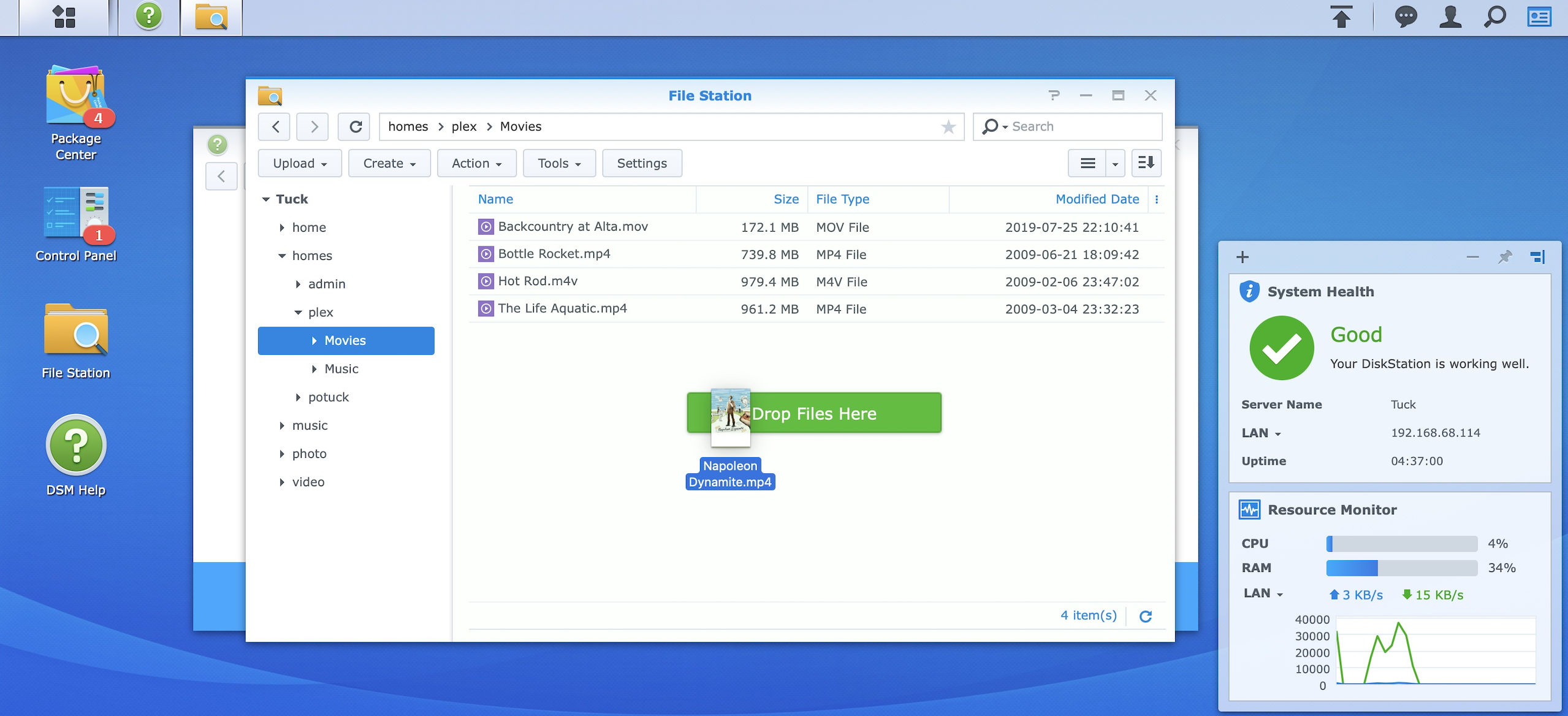

- Setting up a nas for mac for free#
- Setting up a nas for mac install#
- Setting up a nas for mac portable#
- Setting up a nas for mac software#
- Setting up a nas for mac password#
Setting up a nas for mac install#
$ ssh install OpenMediaVault, run: $ sudo wget -O - | sudo bash Once your Raspberry Pi has booted up again, go to the Terminal and SSH back into it again. OpenMediaVault offers an easy-to-use, web-based interface, and multiple add-on options for advanced users.
Setting up a nas for mac software#
We’re going to be using a free piece of software called OpenMediaVault to manage our network storage. When finished, run the following to reboot your Raspberry Pi: $ sudo reboot OpenMediaVault To ensure your Raspberry Pi is set up correctly for networking, run: $ sudo rm -f /etc/systemd/network/99-default.link
Setting up a nas for mac password#
Open Terminal on your computer and run the following to access your Raspberry Pi, replacing “pi” with your previously chosen username and .XXX with your Raspberry Pi’s IP address: $ ssh asked for your password, use the password you created in Raspberry Pi Imager. The login details for accessing your router should be printed on it (look for a sticker on the side or the base), or alternatively you will be able to find them on the website of the router’s manufacturer (or of your ISP if they provided the router). The easiest way to find it is to access your home router and check what devices are connected via Ethernet (LAN). An IP address is a unique string of numbers that identifies a device on your network. In order to access your Raspberry Pi via SSH from your usual computer, you’re going to need the Raspberry Pi’s IP address. Lastly, connect your Raspberry Pi to the mains power via a USB-C power supply unit. Once connected, attach your storage to the powered USB hub, and the hub to your Raspberry Pi. For most people, this means connecting the device directly to your router. Your Raspberry Pi needs to be connected to your network via an Ethernet cable.

To maintain a consistent power supply to your external hard drives, it is best to use a powered USB hub to connect your storage to your Raspberry Pi. We recommend clearing your drive of data, as you may need to format it later on in the process. You can also use a USB flash drive if you prefer.
Setting up a nas for mac portable#
Storage optionsįor this tutorial, we’ll be using a portable USB hard drive and an internal hard drive with a SATA-to-USB adapter. Once complete, you can remove your microSD card from your computer and insert it into your Raspberry Pi. You’ll need these details to access your Raspberry Pi and network storage.ĬHOOSE STORAGE: select your microSD card. Open advanced menu: press Ctrl-Shift-X to bring up the Raspberry Pi Imager advanced menu, or click the Advanced Menu button.Įnable SSH: check the Enable SSH box and set a username and password. We’re using the smaller-sized Raspberry Pi OS Lite, as we do not need the desktop environment for our project. Install Raspberry Pi OS to your microSD cardĬHOOSE OS: Raspberry Pi OS can be found under Raspberry Pi OS (other). We recommend a minimum storage size of 16GB.

Open the Imager application and connect your microSD card to your computerĬonnect your microSD card to your computer using an SD card adapter.
Setting up a nas for mac for free#
Raspberry Pi Imager is available for free for Windows, macOS, Ubuntu for x86 and Raspberry Pi OS, and can be downloaded here. We’re going to use Raspberry Pi Imager to install Raspberry Pi OS Lite onto your microSD card. If you plan to use your own power supply, you’ll see a lightning bolt in the top right corner of your screen if it’s not supplying enough power to the computer. For ease and reliability, we offer affordable official USB-C and micro USB power supplies in a variety of regional formats. Power supplies come in a variety of formats, and you may find that an unofficial model such as a phone charger won’t be powerful enough for your Raspberry Pi.

Older models will require a micro USB power supply and a standard-HDMI-to-HDMI cable instead. If you’re using a Raspberry Pi 4 or a Raspberry Pi 400, you will need a USB-C power supply and a micro-HDMI-to-standard-HDMI cable. For this reason, we recommend using a Raspberry Pi 4 8GB, but any member of the Raspberry Pi 4 range should do the trick. The faster your Raspberry Pi, the faster your data will save to your external storage. Using Raspberry Pi, you can connect your existing storage devices - such as external portable hard drives and USB flash drives - to create secure backups of all your important files, accessible from anywhere in the world.Ĭhoosing the right Raspberry Pi and accessories Network-attached storage (NAS) allows you to save files from your computer and mobile devices to external hard drives via your home or office wireless network.


 0 kommentar(er)
0 kommentar(er)
